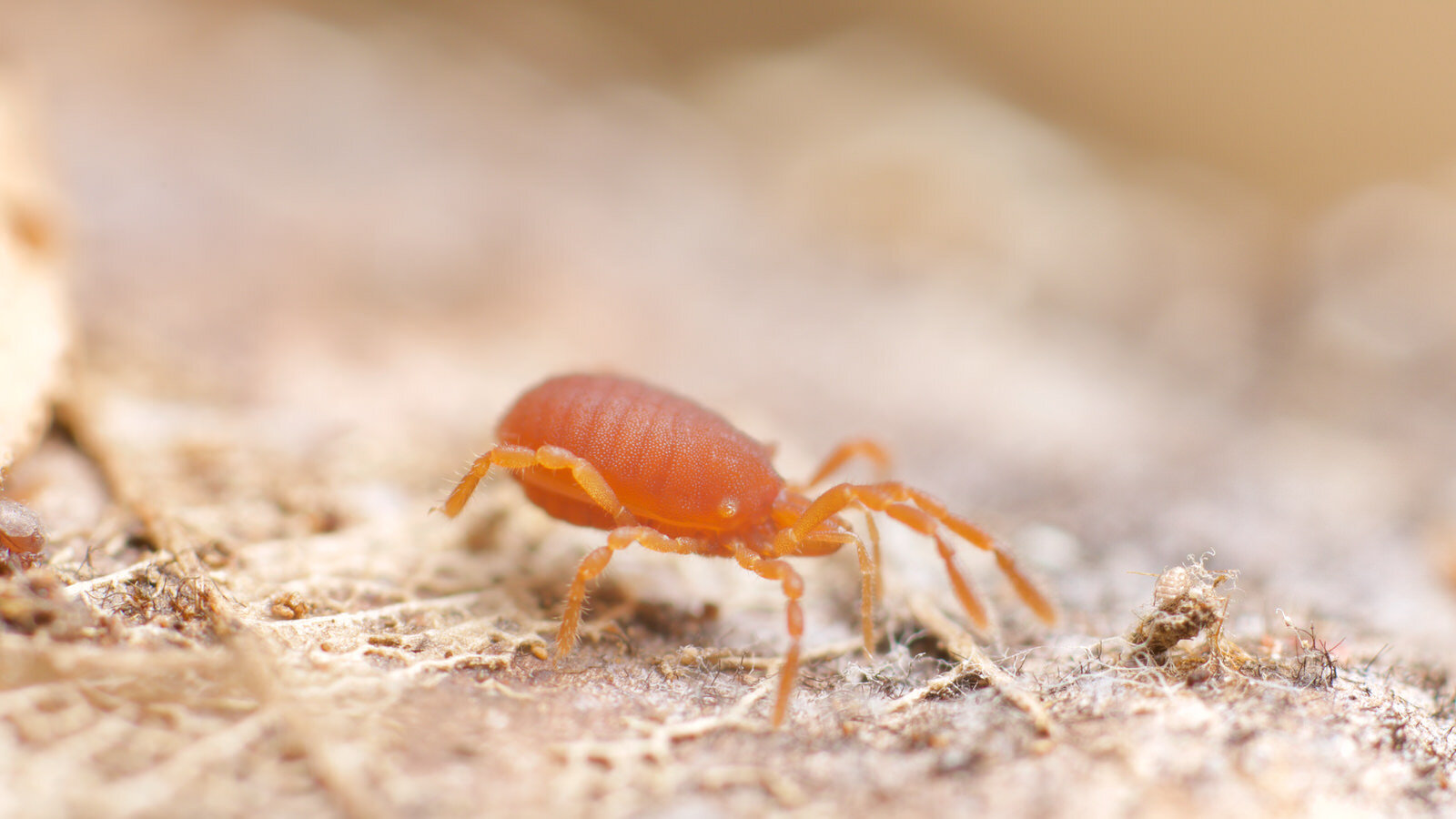
Cyphophthalmi, sironids or mite harvestmen
Mite harvestmen are little known cryptic arachnids, although almost worldwide in distribution, except for the continent of Antarctica. They're otherwise known as Sironids or Cyphophthalmi. They are a suborder of Opiliones, but usually much smaller than their long-legged cousins- between 1.5 and 5mm big. As the common name suggests, they bear more than a passing resemblance to mites, including having a tiny size. They can also be mistaken for Opilioacarids, although unrelated. Interestingly, like all Opiliones, they are more closely related to scorpions than spiders. They are extremely dispersal-limited, meaning that each species, with a few exceptions, is limited to a very small area, with just a few localities usually within a 50km range. Not surprisingly, perhaps, their movements are sloth-like slow.
They live in the leaf litter of undisturbed, temperate, sub-tropical and tropical forests across the world, only needing very small preserved areas in which to survive.
The Cyphophthalmi, due to their ancient origins and almost non-existent dispersal, display the reality of plate tectonics perfectly through biogeography. The first species showed up in the fossil record around 400 million years ago and since then, they have moved less quickly than the continents breaking apart and drifting slowly away. This has meant that it has been possible to track their world distribution and the shifts of the continents almost perfectly. A rather perfect example of tracking smaller patterns of drift is shown by the genus Metasiro, a Florida (USA) mite harvestman. It was found that it was not related to any other species in North America and instead shared a genetic link to some species in West Africa. It was discovered that Florida had once been part of the land mass containing West Africa and had at one time been joined to the land mass containing North America. This was until the two land masses eventually split apart again, except this time, the North America landmass took Florida with it, along with the slow-moving mite harvestmen.
The family Pettalidae, of which the orangey-brown Austropurcellia below belongs to (likely to be A. vicina due to finding it near Kuranda in North Queensland), has a wonderfully textbook Gondwanan range, only being found in parts of Australia, New Zealand, Chili, South Africa and Sri Lanka.
Genus Austropurcellia, (probably A. vicuna) family Pettalidae, from under a log, Kuranda, N. Queensland, Australia
Juvenile Cyphophthalmi Neopurcellia salmoni from Punakaiki, New Zealand
Cyphophthalmus duricorius from Golovec (Park), Ljubljana, Slovenia, April 2017
The two lighter-coloured bulbs seen on either side of C. duricorius are not eyes, but in fact elevated cones called ozophores, at the top of which are defensive scent glands, called ozopores. The cones are unique to Cyphophthalmi. Most species have rudimentary eyes, situated at the base of the ozophores, although typically lack lenses.
Juvenile Cyphophthalmus duricorius from Golovec (Park), Ljubljana, Slovenia, April 2017
